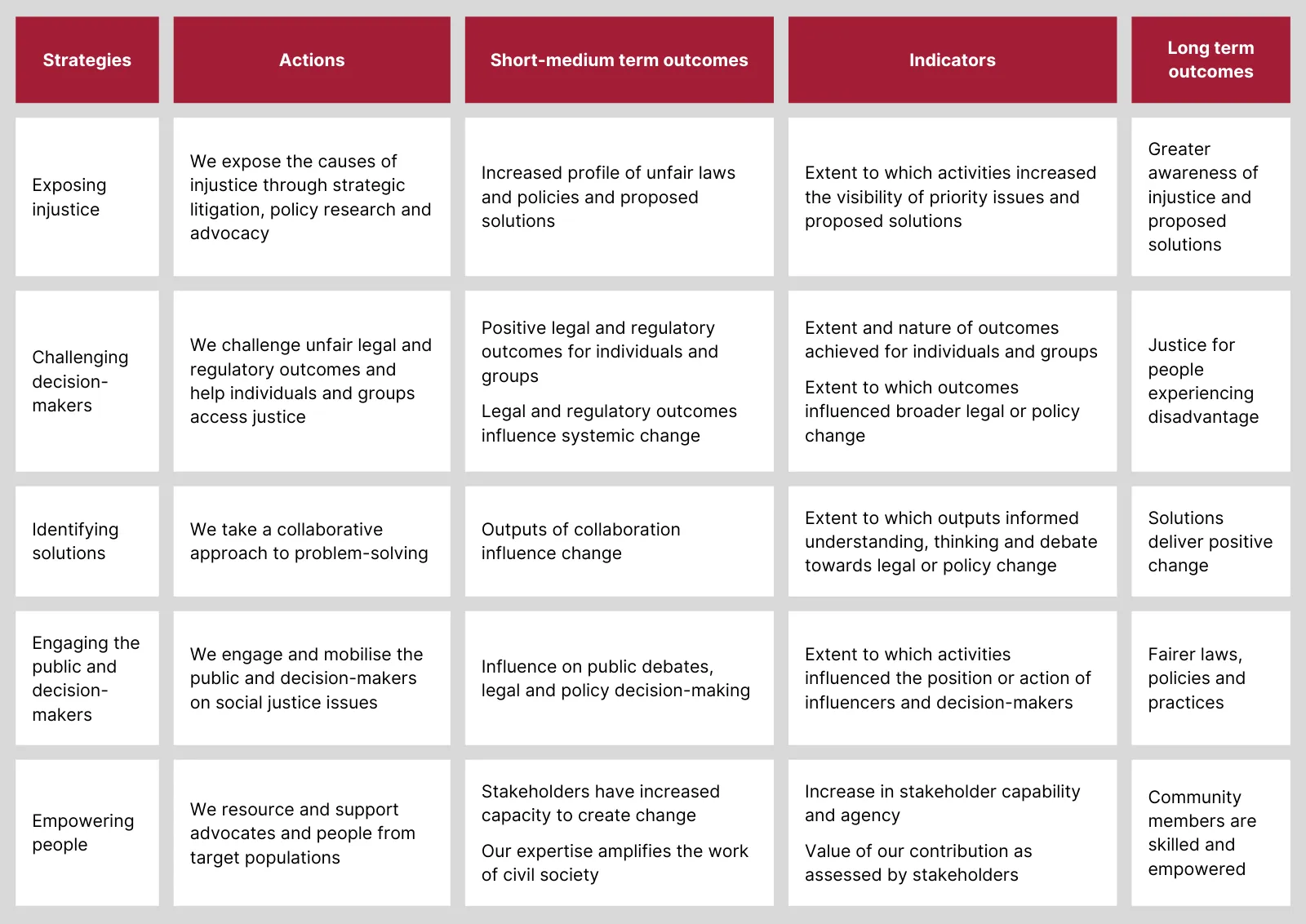Measuring impact
Measuring impact in the context of systemic advocacy can be difficult. But it is essential to us understanding the effectiveness of our work and the difference we are making, so we can analyse our successes and sharpen our strategy.
We have developed a fit-for-purpose Impact Framework, which measures impact at an organisational and project level, aligned to our organisational theory of change.
For the purpose of our framework, we use this definition of impact:
‘the longer-term outcomes that are achieved from the activities, outputs and outcomes of an intervention, program, organisation or sector’ – Centre for Social Impact, 2014.
Our theory of change
We build a fairer, stronger society by:
- exposing laws, policies and practices that cause or entrench injustice
- challenging decision-makers over actions that are unfair or unlawful
- identifying solutions to deliver fair, practical outcomes
- engaging the public and decision-makers to bring about change, and
- empowering people to initiate, inform and influence positive change and become leaders in social justice.
Impact framework
We measure impact by assessing the extent to which we are achieving the short to medium term outcomes that contribute to the long-term outcomes in our theory of change.
Our approach is informed by contribution analysis: a qualitative and process-oriented approach aligned to assessing the influence of advocacy on policy outcomes.

Impact stories
As part of our commitment to impact measurement, we use a range of fit-for-purpose methods to assess our contribution to change. For example, we engaged Clear Horizon, consultants who specialise in social change evaluation, to assess how we contributed to the defeat of the NSW Police Suspect Target Management Plan (STMP).
Using an approach called SIPSI (Significant Instances of Policy and Systems Improvements), Clear Horizon found that we ‘provided long-term commitment, leadership and strategic advocacy expertise’ and made a ‘significant contribution’ to ending the STMP.